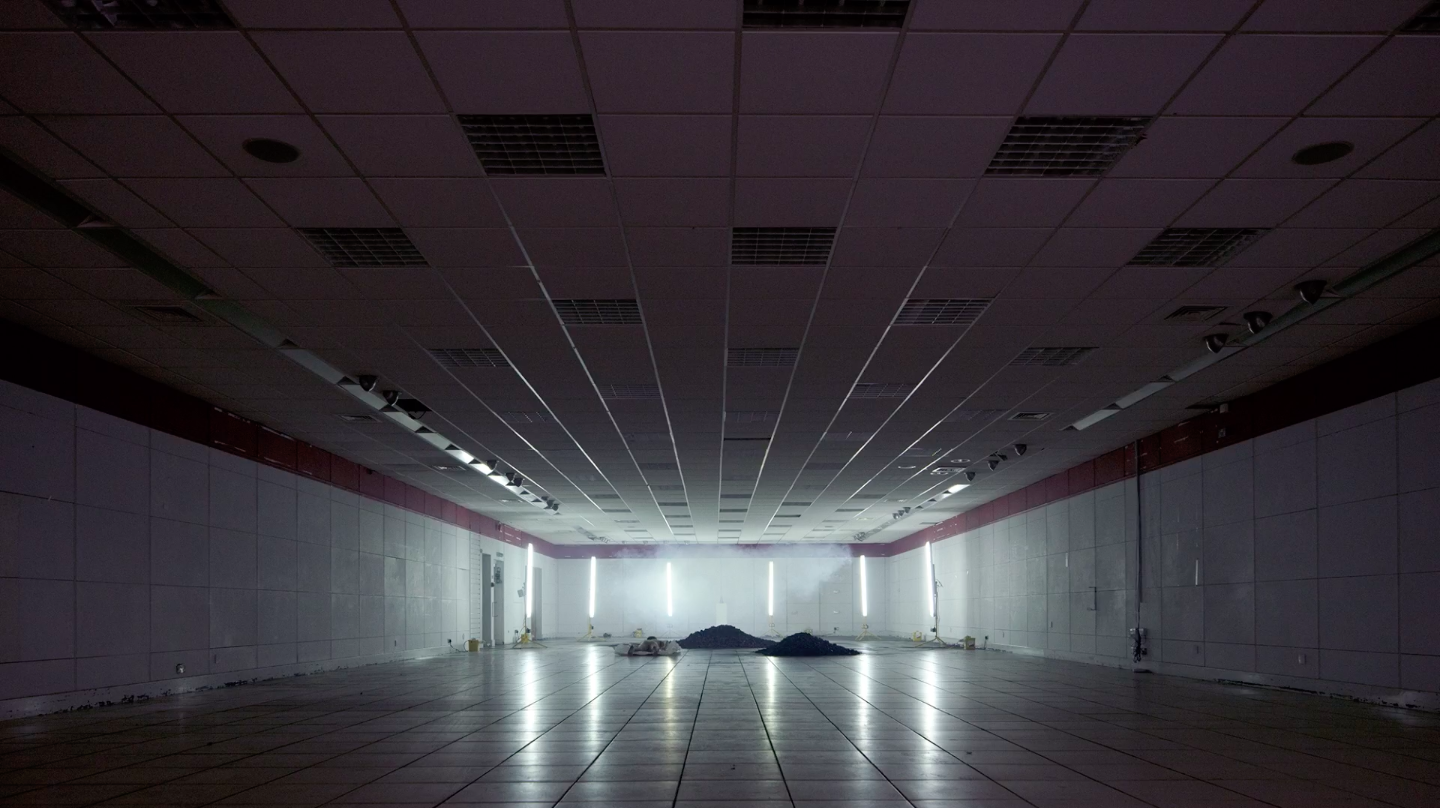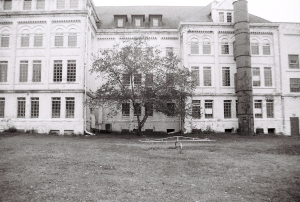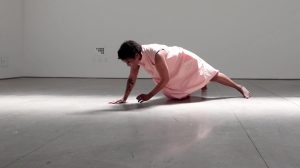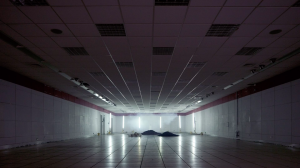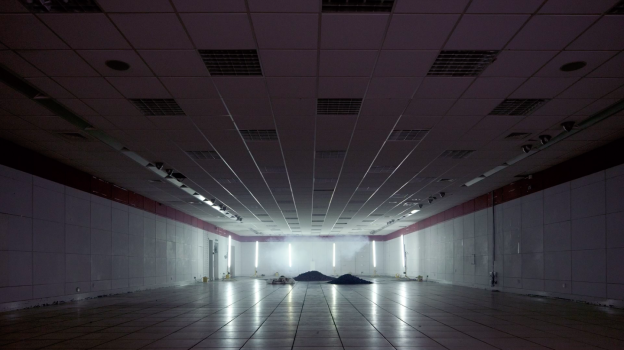
CAN IGNORING THE UNCONSCIOUS MAKE US FREE? SARTRE, EXISTENTIALISM, AND PSYCHOANALYSIS WITHOUT UNCONSCIOUS
Word Count: 2,212 |
Download this article
by •
003: FALLOW
with UNION (PART II: AFFECTIVE LABOUR)
an artwork by HANCOCK & KELLY
All his life, Jean-Paul Sartre was drawn to psychoanalysis. He was an intellectual of his time, after all, so it was natural that they should meet. In the 1930s in Paris, in the blooming intellectual district of Saint Germain, everyone, including the philosophers of the emerging movement of existentialism, was interested in the science of the unconscious coming from Vienna. However, Sartre, as the great defender of freedom, was unwilling to admit that an all-powerful, internal element governs most of our acts, without our knowledge. So he tried to develop his own psychoanalysis, an existential psychoanalysis, one without the secret, psychic place that Freud calls the unconscious, thus reducing the id and the superego to silence, rendering them fallow.
But can this theory really be put into practice?
Can we use psychoanalysis as a method of understanding, investigating and healing the psyche without admitting that an area of it remains (in part) inaccessible? Whether an existential psychoanalysis is ‘possible’ or not, what Sartre endeavored to show, through his theses and his own life, was that the core of the human condition is to be radically free, and that this freedom transcends our psyches, and our supposed destinies.
According to Sartre, our existence precedes our essence: humans are not predefined in any way, and so there’s no such thing as ‘human nature.’ There is nothing that models us, or predetermines us before we have experienced ourselves fully: we are what we decide to be. We’re totally free, free to shape our own lives the way we want. For Sartre, this also means that the feeling of existential anxiety is not negative. On the contrary, existential anxiety acts as a useful indicator, flaring up whenever we face important decisions, reminding us that we are free to choose in any way. If, for example, we feel an intense or diffuse anxiety at a pivotal moment in our lives (in our careers, in our love lives…), it is proof that choice exists (even if it is not the ideal choice), that we can grasp the extent of life’s possibilities, however uncomfortable the results may be. “It is in anxiety that man gets the consciousness of his freedom,” Sartre explains in Being and Nothingness.
What could induce more angst than wondering whether you have chosen everything in your life, whether you’re on the right track, or whether you’ve just succumbed to outside pressure—from those who are ‘supposed-to-know’ like parents, teachers, employers, and psychotherapists. But for Sartre, asking yourself these questions about the direction, value, and reason for your choices and life is a good sign: it means you’re fulfilling yourself. In this way, Sartre returns to a more Socratic definition of philosophical life: philosophy is a tool to access truth, to know oneself better (Gnothi seauton in ancient Greek). Where then, does psychoanalysis come in, except as a method to access a certain truth, one hidden in the unconscious? Sartre also emphasizes the importance of desire as a driving force—and here too we can only welcome the obvious parallel with Freudian psychoanalysis, in which desire also occupies a central role. For Sartre, “liberty is not the power to do what one wants, but to want what one can.”
However, in psychoanalysis as elsewhere, the path to self-knowledge is long. In Being and Nothingness, Sartre describes this endless quest using the following imagery: “We run toward ourselves and we are—due to this very fact—the being which can not be reunited with itself. In one sense the running is void of meaning since the goal is never given but invented and projected proportionately as we run toward it.”
We all have an “original project” that defines us, says Sartre. Like an invisible (but not unconscious) compass, it gives direction to our choices. If we are willing to discover the nature of this original project, or at least get closer to it, we have to search through our personal history and prehistory.
For him, this was obvious, “his only goal in life was to write,” he announces it in his autobiography The Words, which is none other than an essay on self-analysis. As Sartre tells readers, he “started his life as he would finish it: in the middle of books.” At the age of five, not lacking in self-confidence and enjoying an easy and cultivated social environment, he already knew that he would become a writer. His original project was, therefore, to write, to write books and to fight against his condition as a member of the bourgeoisie, to overcome it by becoming a “socially engaged philosopher” active in the street as well as at his desk.
Sartre insists we’re each grappling with our own “original trauma” or “crack,” which isn’t always made up of childhood experiences or based on sexuality, as is often the case for other psychoanalytic schools. This original crack can be a series of events that prompted us to make certain choices and act on them—and that has led directly to the determination of an original project. For Freud, ‘infantile trauma’ is often the cause of a neurosis, which must be analysed. For Sartre, ‘trauma,’ which does not necessarily occur in the early years of the past, is an event that can be surpassed by the emergence of an original project—it is therefore more of an overtaking than a reparation. By Sartre’s account, we are actors in our lives, not victims.
Sartre loved to uncover these original projects in his biographies of great creators, such as Baudelaire, Flaubert, Jean Genêt, and Tintoretto. In order to trace their original projects, in his research, he used what he called a “progressive-regressive” method in an attempt to prove that individuals can rebuild themselves by perpetually surpassing their initial condition. This emphatic method is “regressive” in that it turns to the person’s past to determine their original project, and “progressive” in that it asserts that their freedom is constantly in action, in progress.
In “Le Séquestré de Venise,” Sartre announces that Tintoretto “paints as he breathes.” His art lives in him. When he was twelve years old, he was already animated by “the rage of conquering”: he refused to be a fabric dyer like his father (even if he chose a pseudonym meaning “dyer”), and instead became a great master of painting. He was fired from the studio of Titian, where he was an apprentice, when his teacher feared he would be surpassed by his student. After this event, Tintoretto struggled, always competing with others, even training his own daughter (dressing her like a boy) rather than sending her to apprentice at a competitor. Through it all, Tintoretto was a productive artist, making his gift a real asset. There is every reason to believe that Tintoretto strove throughout his life to overcome the condition of his birth, and that this feat was, in large part, what helped to solidify his talent.
Discussing the “original projects” of great artists like Tintoretto by writing their biographies is one thing, but how can the rest of us connect with, and achieve, our own “original projects”?
The challenge to achieve our own original projects looks especially difficult when we constantly meet the manifest resistances of the unconscious. For much of psychoanalysis, the conscious self does not occupy all our psyche. The unconscious plays a pivotal role, expressing itself through our dreams, our lapses, our Freudian slips, or our resistances. In this way, he unconscious destabilizes us, constantly reminding us that we do not know everything about ourselves. But for Sartre, a free existence cannot cohabitate with an unconscious that governs it, while remaining hidden and unknowable.
How then can one draw inspiration from the psychoanalytic method, while maintaining a commitment to human freedom and agency?
Sartre adopted his own, radical solution, by simply discarding the unconscious: for Sartre, there is no ‘dark continent’ hidden deep in our psyche. We forget to do or say something important? It is not a failed act, but an action of our bad faith. An embarrassing lapsus escapes us? It is our finesse d’esprit that plays a trick on us. We constantly repeat the same mistakes? No big deal, we’ll eventually change, and it will be great. Our dreams are loaded with symbolism? Our imagination is just expressing itself . . .
Determinism was also a problem for Sartre. By placing total freedom above all, he stumbled on the idea that man is also bound by his social class and by the phenomena—the material reality—that surrounds him. As he specifies in the essay “The Itinerary of a Thought”: “This is the definition I would give today of freedom: The small movement which makes of a totally conditioned being someone who does not render back completely what his condition has given him.” Our choices have certainly been inspired by our family and social environment, but we can overcome them by appropriating our own destiny—by “composing with what the others have done with us.” For Sartre, this means that we build ourselves through the gaze of the other and its influence (and here too we can note a flagrant parallel with psychoanalysis), but this dynamic can be an opportunity, not only a restraint.
That’s because, through it all, our radical freedom, and our own Sartrian “original projects” persist. Our freedom and our original projects never stop, always find a way to express themselves, even in the most inextricable situations. Even when our possibilities for action appear limited, there is always a way to choose, to invent, to exceed our condition, and therefore… to be free.
Sartre, Jean-Paul. Being and Nothingness.Translated by Hazel E. Barnes, Washington Square Press, 1993.
—. “The Itinerary of a Thought.” Between Existentialism and Marxism,translated by J. Mathews, Pantheon Books, 1974.
—. “Le Séquestré de Venise.” Situations IV: Portraits, Gallimard, 1993.
—. The Words. Translated by Bernard Frechtman, Vintage, 1981.
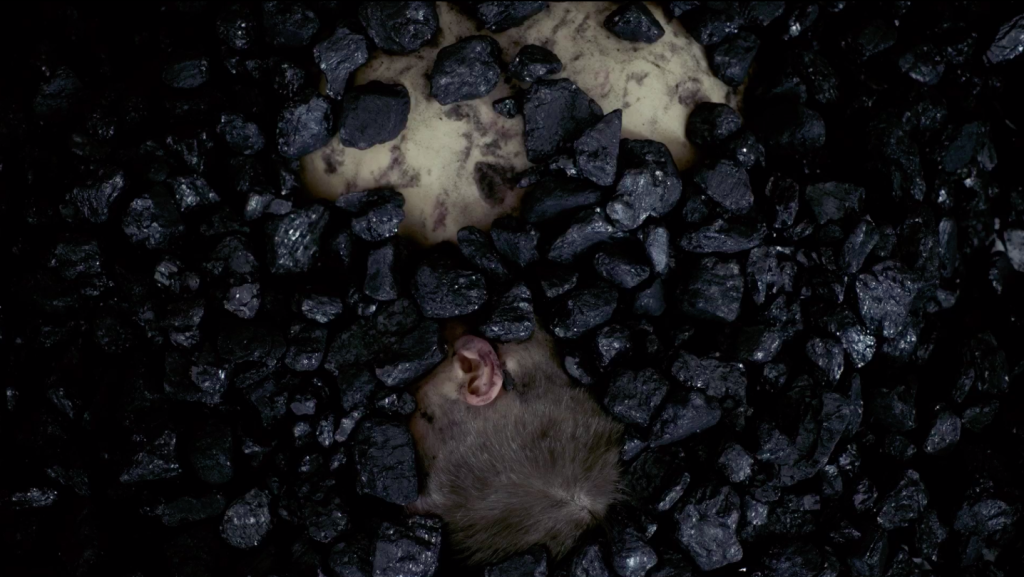
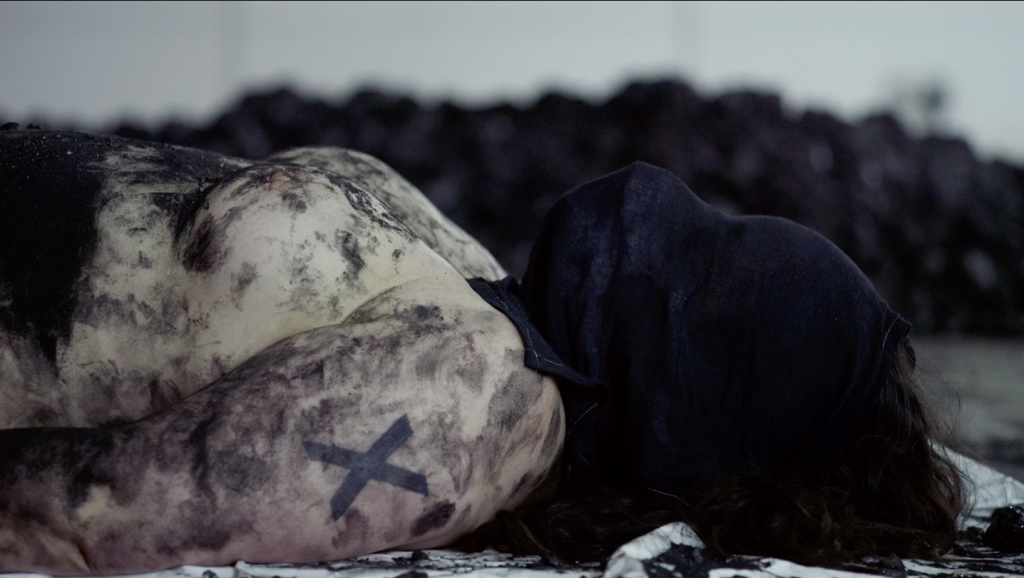
UNION
UNION explores ideas of physical and emotional labour, collaboration, and value. The project consists of five parts – encompassing print, live performance, and online media.
The central materials of the work are the bodies of the artists, and coal. As a material, coal has been used – literally and figuratively – to both build and destroy systems of power and wealth, communities and bodies. Coal is bound with contradictions. As a carbon entity, it can be ignited to generate heat and electrical power – sustaining and enriching life – while simultaneously contributing to the irrevocable chaos of climate change. It is alchemical – transforming through heat into gold – it has been mined and used to line the pockets of industrialists and governments, while becoming an emblem of working class failure. Thriving towns and physical communities have been constructed around the industries which mined and processed coal, only to be left decimated by their collapse. Bodies, built and fed on mining, slowly asphyxiate on its wages of dust. Drawing on these ideas and concerns, and their own family histories as coal miners and industrial workers, Richard Hancock and Traci Kelly undertake a labour of images – a series of physical and emotional tasks mined from a poetic exploration of the body and a cellular reaction to all that burns.
Part II: Affective Labour is a durational live performance that begins with the bodies of Richard Hancock and Traci Kelly lying prone on the floor – one buried within 1000kg of coal. As a metronome keeps time, the audience is invited to shift the coal, piece by piece, from one body to the other. Their labour will be complicit in the emancipation of one body, at the cost of the other; a testament to all that has been rescued and all that has been sealed and lost.
MATHILDE RAMADIER writer
Mathilde Ramadier (born in 1987) is a French writer of non-fiction essays and graphic novels (among others Sartre, a graphic biography, ed. NBM, NY) living between Berlin and Southern France. She studied philosophy at the École Normale Supérieure in Paris and is currently finishing a master’s degree in Psychoanalysis at the University of Montpellier.
HANCOCK & KELLY artists
hancock and kelly is the collaborative project of artists Richard Hancock and Traci Kelly. Since 2001, they have collaborated on a series of works questioning and provoking the gaps between subjects. Through an internationally acclaimed, interdisciplinary body of work, they have continually asked questions of where the limits of the body may be drawn and separated. Issues of materiality, value, and embodied knowledge have been pivotal to the complex critical and aesthetic dialogues they undertake.
hancock & kelly have performed and exhibited at venues and events such as the Chicago Cultural Center, USA and the 6th Moscow Biennale of Contemporary Art, RUS), amongst others.
Image credits: photographs by Paul Samuel White, for
]performance s p a c e [
© Copyright for all texts published in Stillpoint Magazine are held by the authors thereof, and for all visual artworks by the visual artists thereof, effective from the year of publication. Stillpoint Magazine holds copyright to all additional images, branding, design and supplementary texts across stillpointmag.org as well as in additional social media profiles, digital platforms and print materials. All rights reserved.
